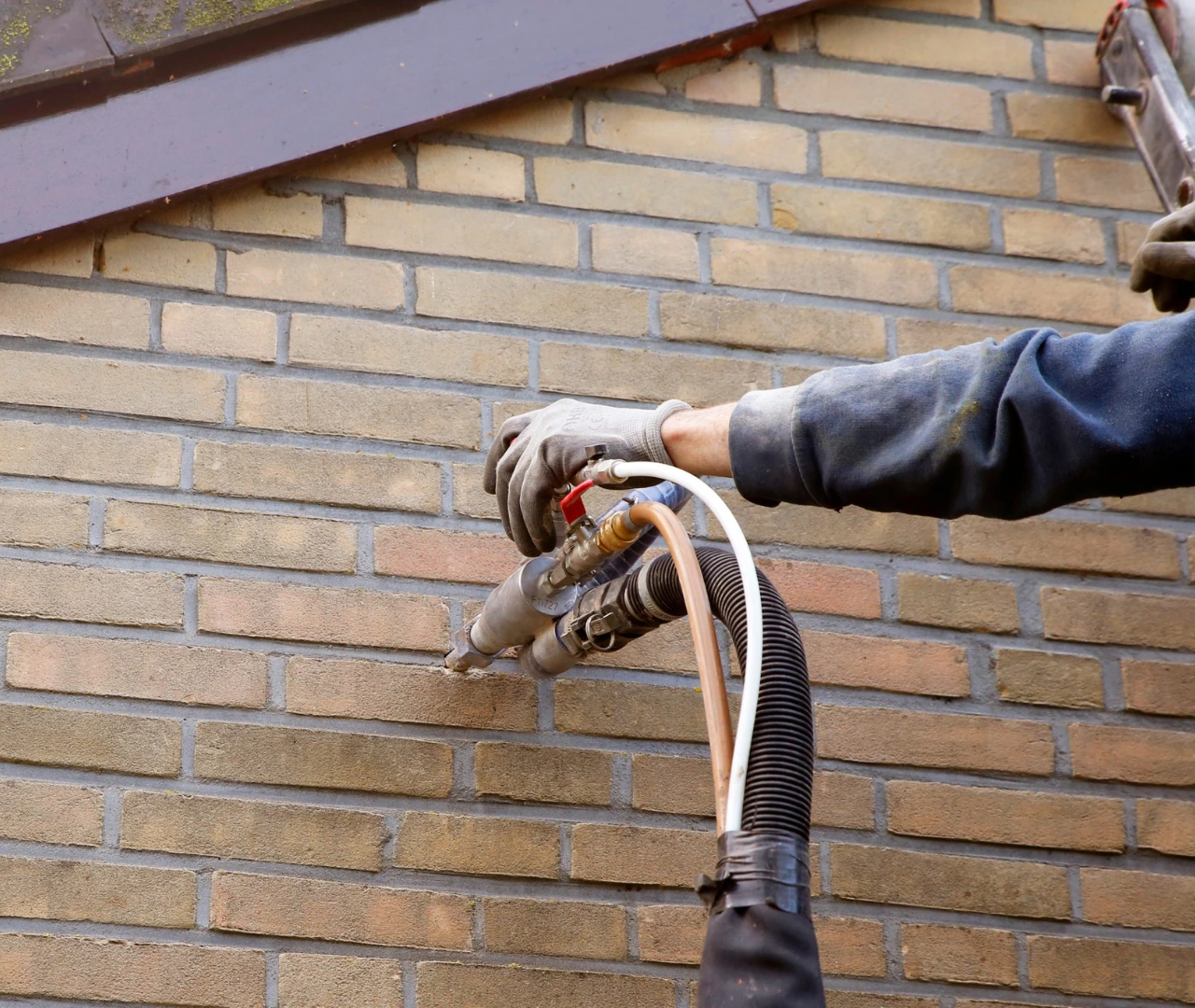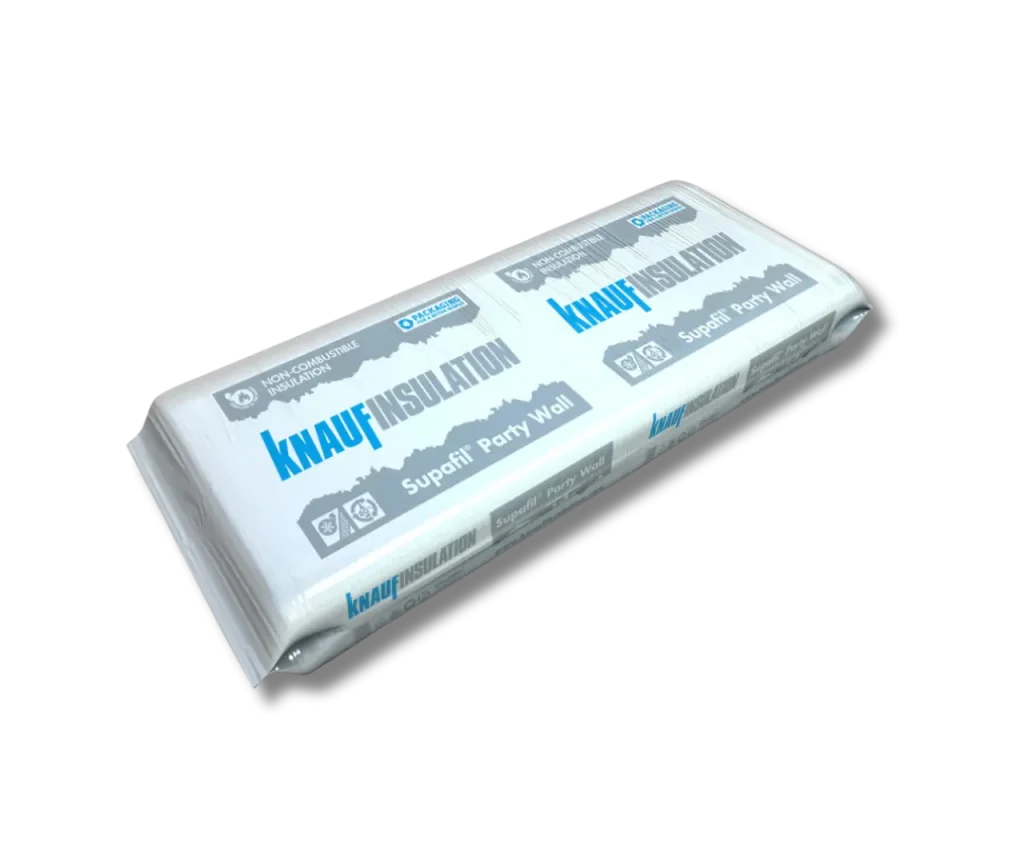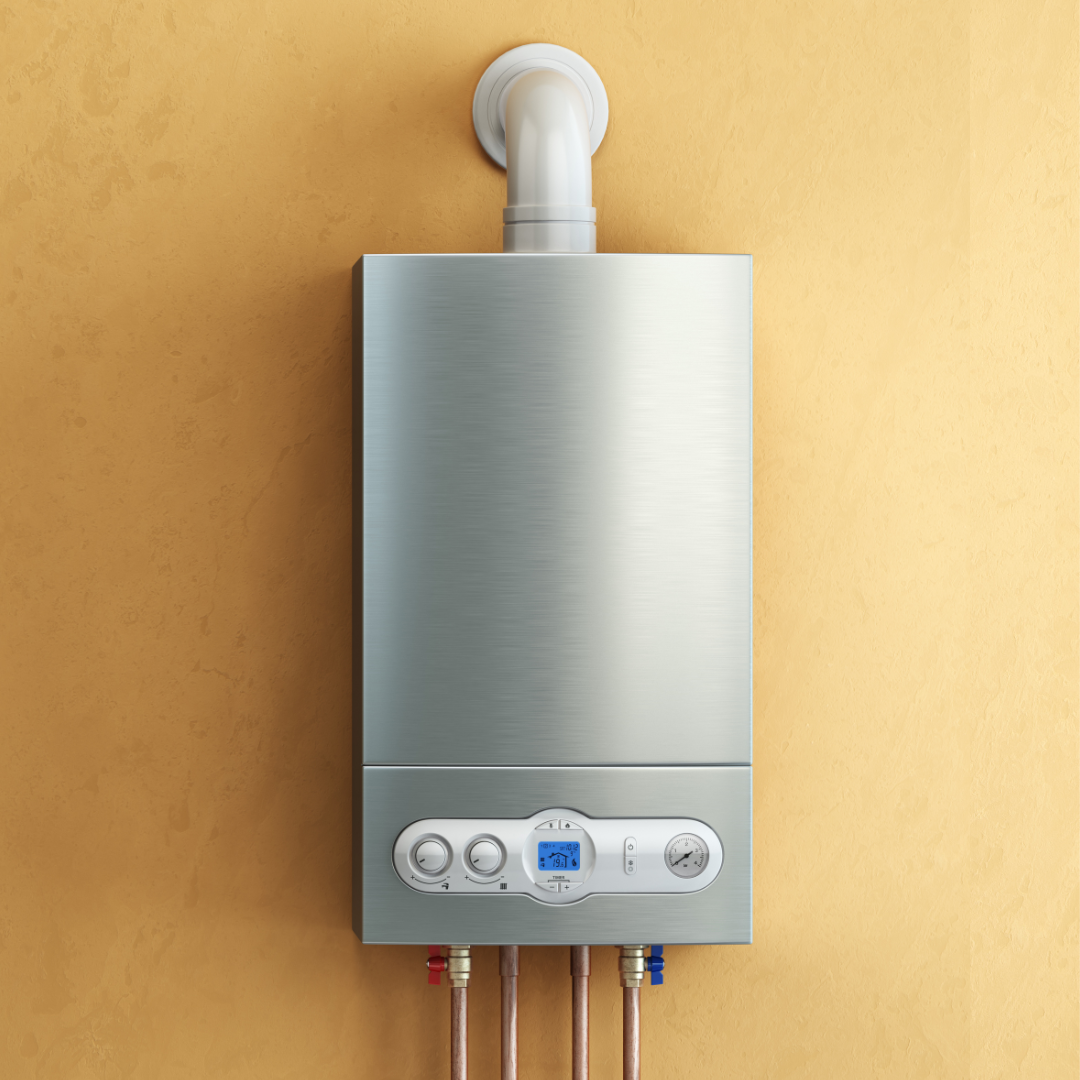Check if you qualify for a free Cavity wall insulation grant
Homeowners in the UK can access government-backed funding to help cover the cost of installing Cavity wall insulation. Insulate your home, save on energy bills, and reduce heat loss.

What is Cavity Wall Insulation?
Cavity wall insulation is one of the simplest and most effective ways to make your home more energy-efficient and comfortable. By filling the gap between your home’s inner and outer walls with insulating materials like foam or mineral wool, it creates a thermal barrier that helps keep the warmth in during winter and the heat out in summer. This means your home stays cozy year-round, while you enjoy lower energy bills and reduced carbon emissions. It’s an easy upgrade that can significantly cut heating costs and make your home more eco-friendly without disrupting your daily life.
Cavity Wall Insulation Checker
Find out if you qualify for FREE cavity wall insulation
Save up to £400/year on energy billsCheck Your Eligibility
Why Cavity Wall Insulation?
Your Results
Instant cavity wall assessment
Awaiting Your Property Data
Enter your postcode on the left to get your FREE cavity wall insulation assessment in seconds
Checking eligibility...
Please wait while we analyze your EPC data
Property Information
Current Cavity Wall Insulation Level
Assessment based on EPC wall description
Other ECO4 Measures You May Qualify For

Cavity Walls
- Composition: Composed of two separate masonry walls (outer and inner), with a gap (cavity) between them, typically filled with air or insulation.
- Air Gap: The cavity creates a barrier that helps reduce moisture penetration and provides thermal insulation. This air gap prevents heat loss by creating a layer of insulation.
- Drainage: The design includes weep holes or vents at the bottom to allow moisture to drain away, preventing water accumulation and damp issues.
- Material Variety: Cavity walls can be built using various materials, such as bricks, blocks, or concrete, allowing for versatility in design and construction.
- Building Codes: Common in modern construction, especially from the 1930s onwards, and often required by building regulations for energy efficiency.

Solid Bricks Walls
- Composition: Made of a single layer of solid material, typically brick, stone, or concrete, without any cavity.
- Thermal Bridging: Solid walls can experience thermal bridging, where heat escapes through materials that are not insulated, leading to higher energy costs.
- Moisture Retention: More susceptible to moisture retention as there is no cavity for drainage, which can lead to damp and mold issues.
- Weight: Generally heavier due to the solid nature of the walls, which may require a more robust foundation.
- Historical Construction: More common in older buildings, often found in structures built before the 1930s; may not meet current energy efficiency standards without additional insulation.

Do I qualify for a free Insulation?
If your household meets certain income and property requirements, you could be eligible for a free cavity wall insulation grant to improve your home’s energy efficiency.
To qualify, your EPC (Energy Performance Certificate) rating must be D or lower, your council tax band should fall between A and D, and your household income must be less than £31,000 per year. While benefits are not mandatory, receiving benefits can increase your chances of qualifying.
In some cases, homes with older insulation or households receiving specific benefits may be prioritized for these grants, making it easier to secure funding for loft insulation.
Qualifying benefits
Income based Jobseekers allowance (JSA)
Income Support (IS)
Working Tax Credit (CTC)
Child Tax Credit
Income related Employment and Support Allowance (ESA)
Pension Credit Savings Credit (PCSC)
Universal Credit (UC)
Housing Benefit
Child Benefit
Housing Benefit
Costs and savings
Save up to £455* on your energy bills with cavity wall insulation completely free and funded by the government under the GBIS grant! This cost-effective solution reduces the amount of heat escaping from your home, meaning you’ll use less energy to keep your living spaces warm and cozy, saving you money year after year.
Whether you live in a large detached house or a small flat, you can benefit from this insulation without worrying about installation costs. The government funding covers it all, making it an excellent opportunity to improve your home’s energy efficiency at no cost to you. Plus, by reducing your energy consumption, you’re not just saving money you’re also contributing to a greener, more sustainable future. Don’t miss out on this chance to enjoy a warmer home and lower energy bills, all without spending a penny!
Cavity wall insulation energy bill savings (Per Year)
Material used
Knauf Supafil Wool
Knauf Supafil Wool is a high-performance glass mineral wool designed for cavity wall insulation. It is widely used in construction due to its ability to enhance thermal efficiency while maintaining breathability within the wall structure. The material is specifically engineered for injection into cavity walls, ensuring a complete fill without the need for additional binders or adhesives. This loose-fill insulation provides an even distribution within the cavity, eliminating cold spots and reducing overall heat loss. Suitable for both new and existing buildings, it offers a practical solution for improving energy efficiency without extensive structural modifications.

Composition and Properties
Knauf Supafil Wool is a glass mineral wool insulation material made from spun glass fibers. It is designed to be non-combustible and free from any artificial dyes, binders, or additives, which makes it a stable and durable choice for cavity wall insulation. The material is manufactured using a high percentage of recycled glass, contributing to its sustainability while maintaining effective insulation properties. Its lightweight and loose-fill nature allows it to be easily blown into cavity walls, ensuring a seamless installation without gaps or voids. Due to its breathable structure, it does not trap moisture within the walls, reducing the risk of dampness or mold. Unlike rigid insulation boards, which require cutting and fitting, this material conforms to the shape of the cavity, allowing for efficient thermal retention without compromising structural integrity.
Thermal Performance
Knauf Supafil Wool is designed to enhance the thermal efficiency of buildings by significantly reducing heat loss through cavity walls. Its low thermal conductivity ensures that indoor temperatures remain stable, minimizing the need for excessive heating during colder months and cooling during warmer periods. This contributes to lower energy consumption, making homes and buildings more energy-efficient. Unlike some other insulation materials, Knauf Supafil Wool does not settle over time, maintaining its insulating properties for the long term. It effectively fills the entire cavity without gaps or compression, ensuring that thermal bridges—areas where heat can escape—are minimized. By improving the overall insulation of a property, this material helps homeowners and building occupants reduce their energy bills while also contributing to broader environmental sustainability goals.
Fire Safety and Compliance
Knauf Supafil Wool is classified as non-combustible, meaning it does not contribute to the spread of fire within a building. It has a Euroclass A1 fire rating, which is the highest classification for fire resistance in building materials. This ensures that, in the event of a fire, it will not produce toxic smoke or flaming droplets, reducing the risk to occupants and limiting fire damage. Its composition of mineral glass fibers allows it to withstand high temperatures without melting or igniting, making it a safer choice compared to some synthetic insulation materials. Compliance with fire safety standards is essential in construction, and this insulation meets the necessary regulations for use in cavity walls. By providing an additional layer of fire resistance within the structure, it enhances overall building safety without compromising thermal efficiency.
Benefits of Cavity Wall Insulation
Improved Energy Efficiency:
Cavity wall insulation plays a crucial role in enhancing your home’s energy efficiency. By reducing heat loss through walls, it helps maintain a stable indoor temperature, meaning your heating system doesn’t have to work as hard. This translates to lower energy bills and significant savings over time. With cavity wall insulation, your home remains warmer in winter and cooler in summer, ensuring year-round comfort while reducing reliance on artificial heating and cooling systems.
Enhanced Comfort:
One of the biggest advantages of cavity wall insulation is the improved comfort it brings to your living space. By preventing heat from escaping, it eliminates cold drafts and temperature fluctuations, ensuring a consistently warm and cozy environment. Whether it’s a chilly winter evening or a breezy autumn day, properly insulated walls keep your home comfortable, allowing you to enjoy a more pleasant indoor atmosphere without needing to constantly adjust the thermostat.
Environmental Impact:
Reducing energy consumption through cavity wall insulation directly contributes to lowering your home’s carbon footprint. By using less energy for heating, you decrease greenhouse gas emissions, supporting sustainability efforts and helping combat climate change. Insulating your cavity walls is a simple yet effective way to make your home more eco-friendly, aligning with modern energy-saving initiatives while reducing your overall environmental impact.
Noise Reduction:
In addition to thermal benefits, cavity wall insulation also acts as a sound barrier. It absorbs and reduces external noise from busy streets, construction, or loud neighbors, creating a quieter and more peaceful indoor environment. If you live in a noisy area, installing cavity wall insulation can significantly improve soundproofing, allowing you to enjoy a calm and distraction-free home.
Increased Property Value:
A well-insulated home is not only more energy-efficient but also more attractive to potential buyers. Homes with cavity wall insulation are seen as cost-effective in the long run, as they promise reduced heating expenses and enhanced indoor comfort. As energy efficiency becomes a priority for homeowners and buyers alike, having proper insulation can increase your property’s market value, making it a smart investment for the future.
By choosing cavity wall insulation, you’re not just improving your home’s efficiency and comfort but also making a positive impact on the environment and enhancing your property’s overall value.
FAQ'S
Is Cavity wall insulation free?
Yes, for eligible households, the GBIS grant covers the full cost of cavity wall insulation. This government-backed scheme aims to improve energy efficiency and reduce heating costs for qualifying homes.
Eligibility is based on factors such as council tax band, income level, health conditions, or benefits status. If you meet the criteria, you can have cavity wall insulation installed at no cost, helping to keep your home warmer and reduce energy bills.
What is the GBIS Grant?
The GBIS (Great British Insulation Scheme) Grant is a government initiative designed to help households improve their home’s energy efficiency by providing funding for insulation and other energy-saving measures. The goal of the scheme is to reduce heat loss, lower energy bills, and make homes more comfortable, especially during colder months.
Through the GBIS grant, eligible households can receive free insulation upgrades, such as loft insulation, cavity wall insulation, and ventilation improvements. These measures help retain heat within the home, reducing the need for excessive heating and, in turn, lowering energy consumption.
Eligibility for the grant depends on factors such as council tax band, household income, health conditions, or benefits status. It is available to homeowners, landlords, and tenants who meet the qualifying criteria.
By improving insulation, the GBIS grant not only benefits individual households but also contributes to reducing overall energy demand and carbon emissions, supporting the UK’s efforts toward a more sustainable future.
What does the Cavity Wall Insulation Grant cover?
The Cavity Wall Insulation Grant under the GBIS (Great British Insulation Scheme) covers the full cost of installing cavity wall insulation for eligible households. This includes:
- Assessment and Survey: A professional evaluation to determine if your home is suitable for cavity wall insulation.
- Material and Installation: The insulation material, such as mineral wool or foam, is injected into the cavity between the inner and outer walls to reduce heat loss.
- Necessary Preparations: Any essential preparations, such as ensuring walls are in good condition and accessible for installation.
- Ventilation Measures: In some cases, the grant may also cover necessary ventilation improvements, such as trickle vents or extractor fans, to maintain proper airflow and prevent damp issues.
This grant is aimed at helping households reduce heat loss, lower energy bills, and improve overall home comfort. To qualify, homes must meet specific eligibility criteria, which include council tax band, income level, health conditions, or benefits status.
How much does cavity wall insulation cost?
The cost of cavity wall insulation typically ranges between £6,000 – £8,000, depending on the size and type of the property. However, if you qualify for the GBIS (Great British Insulation Scheme) grant, the full cost is completely covered, meaning you won’t have to pay anything.
This government-backed scheme is designed to help eligible households improve energy efficiency and reduce heating costs by providing free insulation. Eligibility is based on factors such as council tax band, household income, health conditions, or benefits status.
How long does cavity wall insulation last uk?
Cavity wall insulation in the UK typically lasts for 25 years or more, but its actual lifespan depends on several factors, including the quality of the material used, the installation process, and the condition of the property.
When installed correctly using high-quality insulation materials, such as mineral wool, cavity wall insulation can remain effective for several decades without needing replacement. The insulation works by reducing heat loss through external walls, helping to keep the home warmer in winter and cooler in summer, while also lowering energy bills.
However, factors such as moisture exposure, structural changes, and ventilation conditions can influence the long-term performance of the insulation. If installed properly and maintained in a well-ventilated home, it should continue to provide energy efficiency benefits for many years.
Additionally, many insulation installations come with a guarantee of up to 25 years, providing homeowners with peace of mind regarding their investment in energy-saving improvements.

Check your eligibility for a free government grant in just 60 seconds.


Boiler Grant
Upgrade your old or inefficient boiler through the government-backed Boiler Grant scheme. Available to eligible households, this grant covers the cost of outdated boilers to improve home energy efficiency and reduce heating bills.

Air Souce Heat Pump Grant
The UK government is supportive of renewable energy solutions, and air source heat pumps are no exception. Homeowners can take advantage of various grants and incentives aimed at reducing the upfront costs of installing an air source heat pump.

First Time Central Heating Grants
First time central heating grants (FTCH) are available from the government as part of their energy efficiency scheme, Energy Company Obligation 4 (ECO4), which is aimed at reducing fuel poverty throughout the UK.
